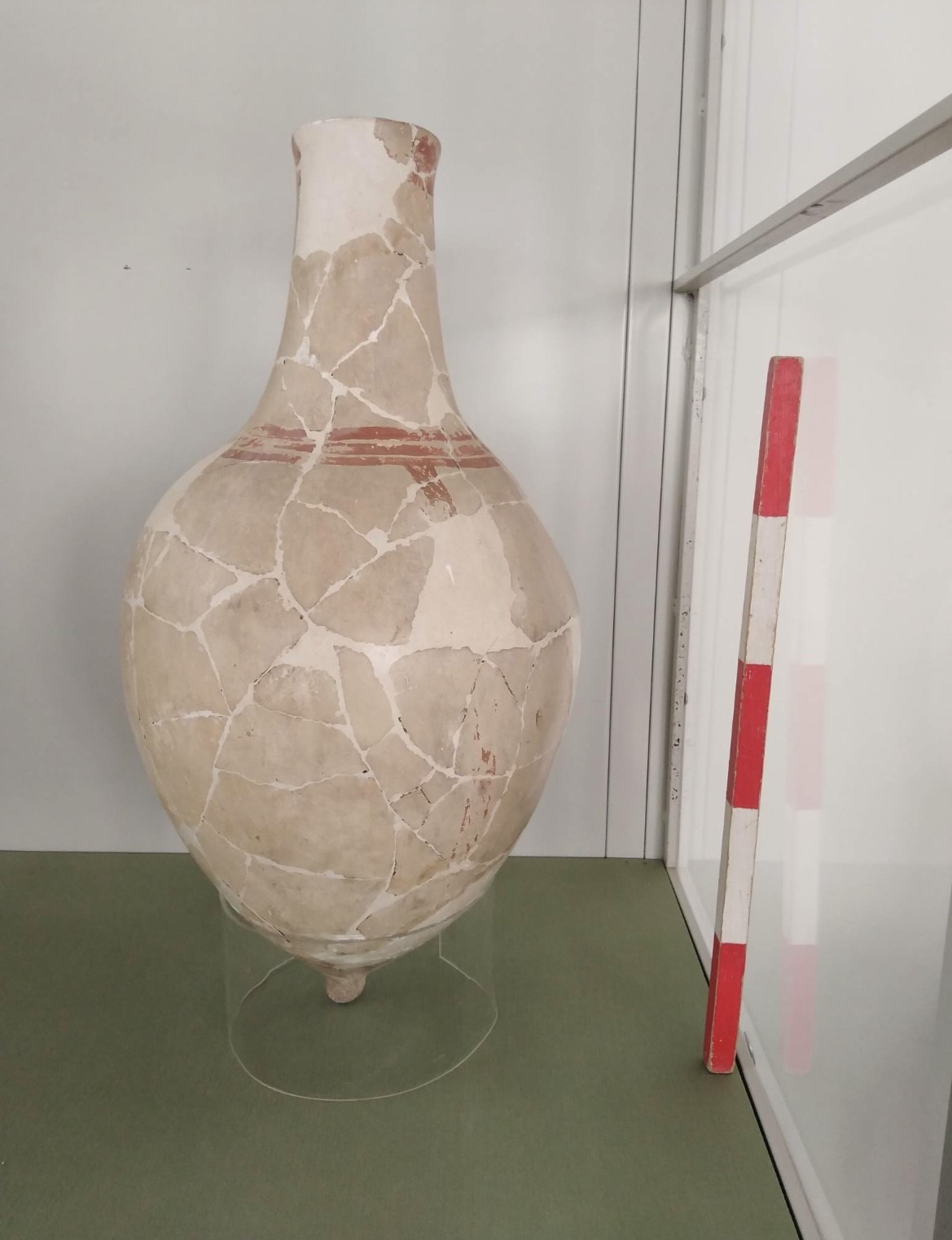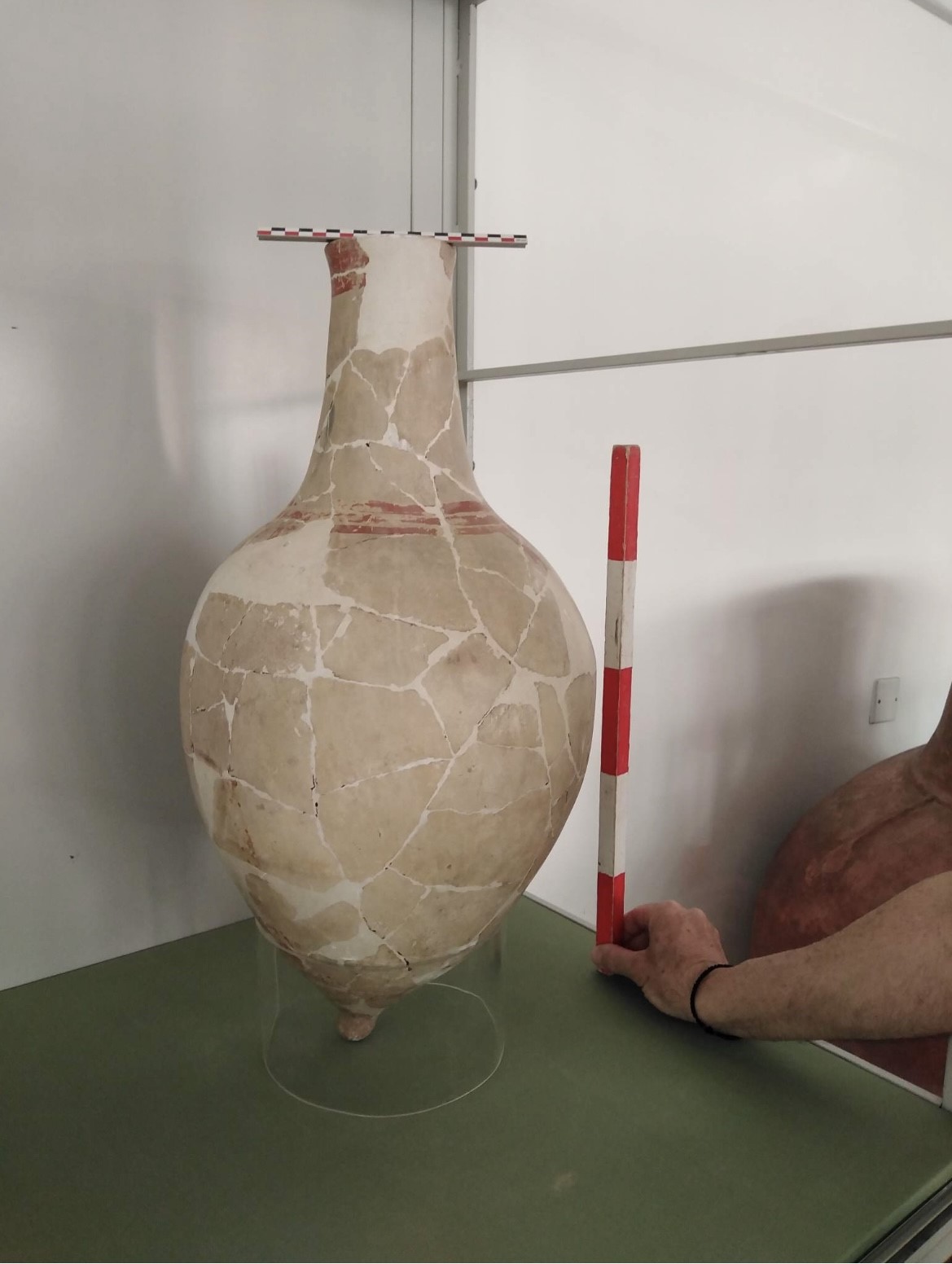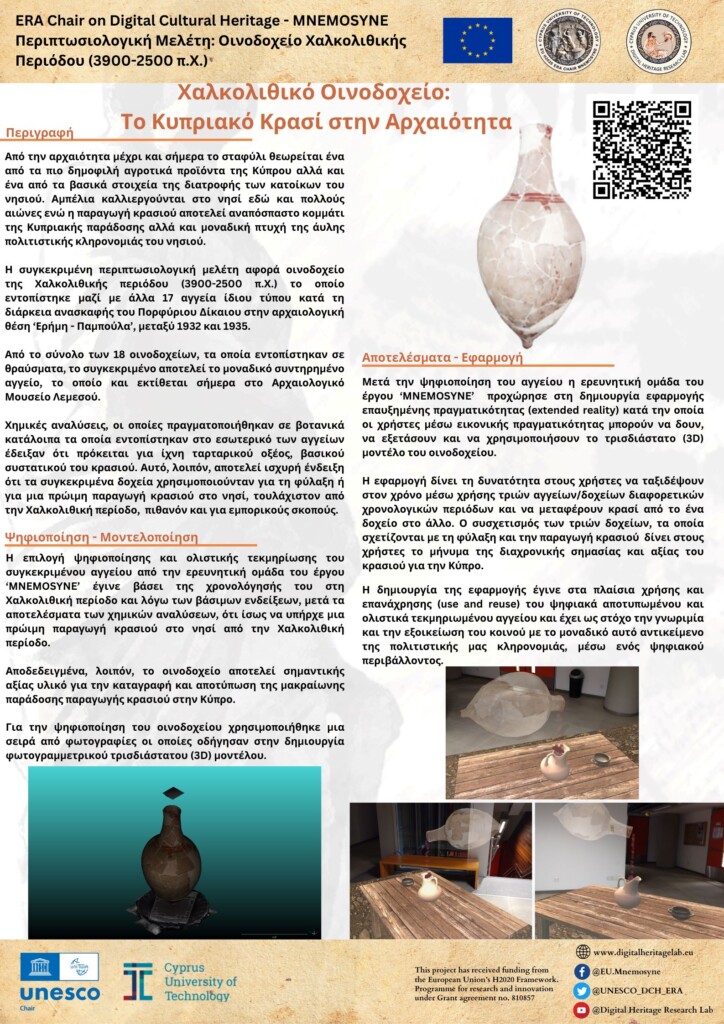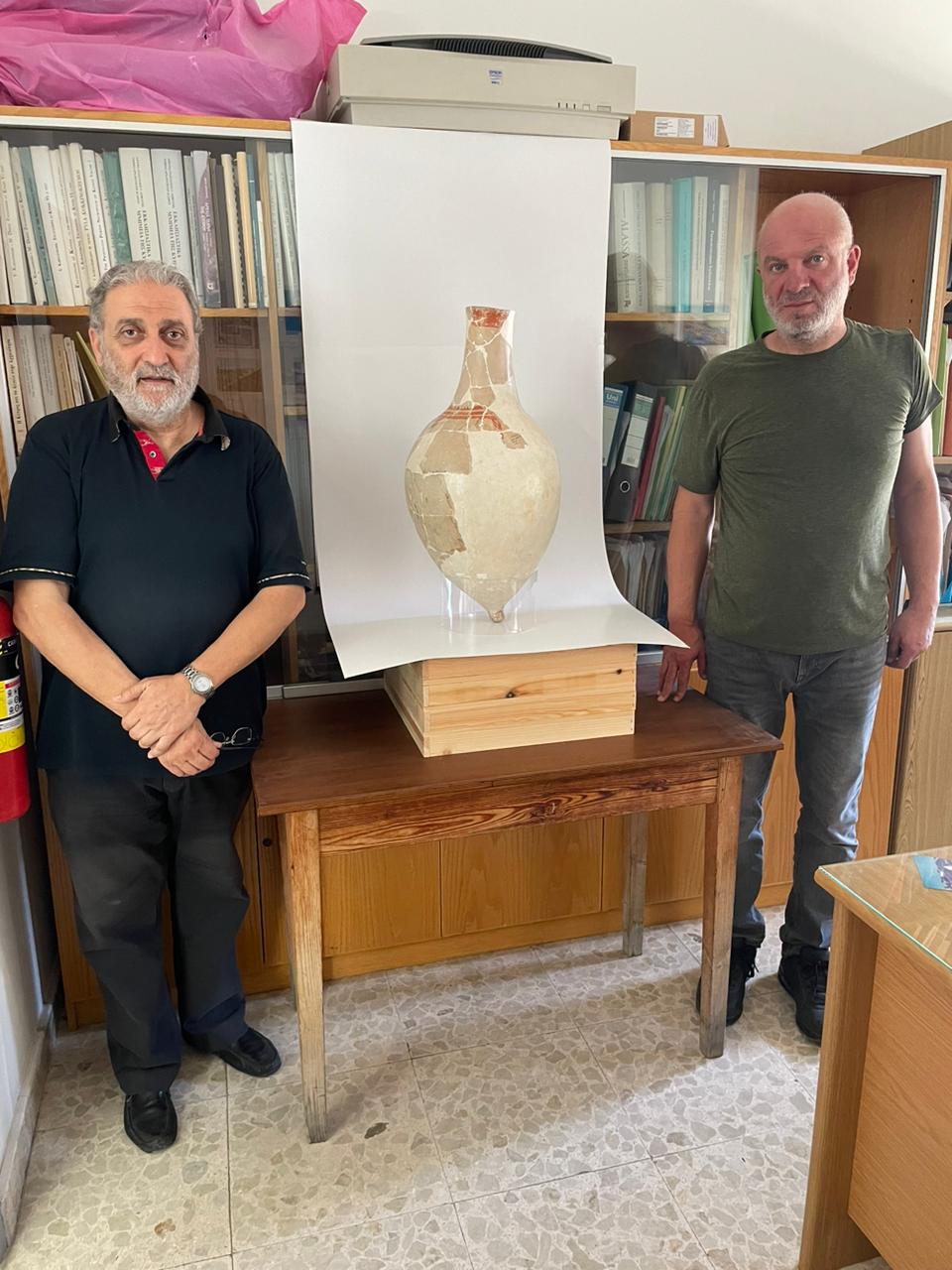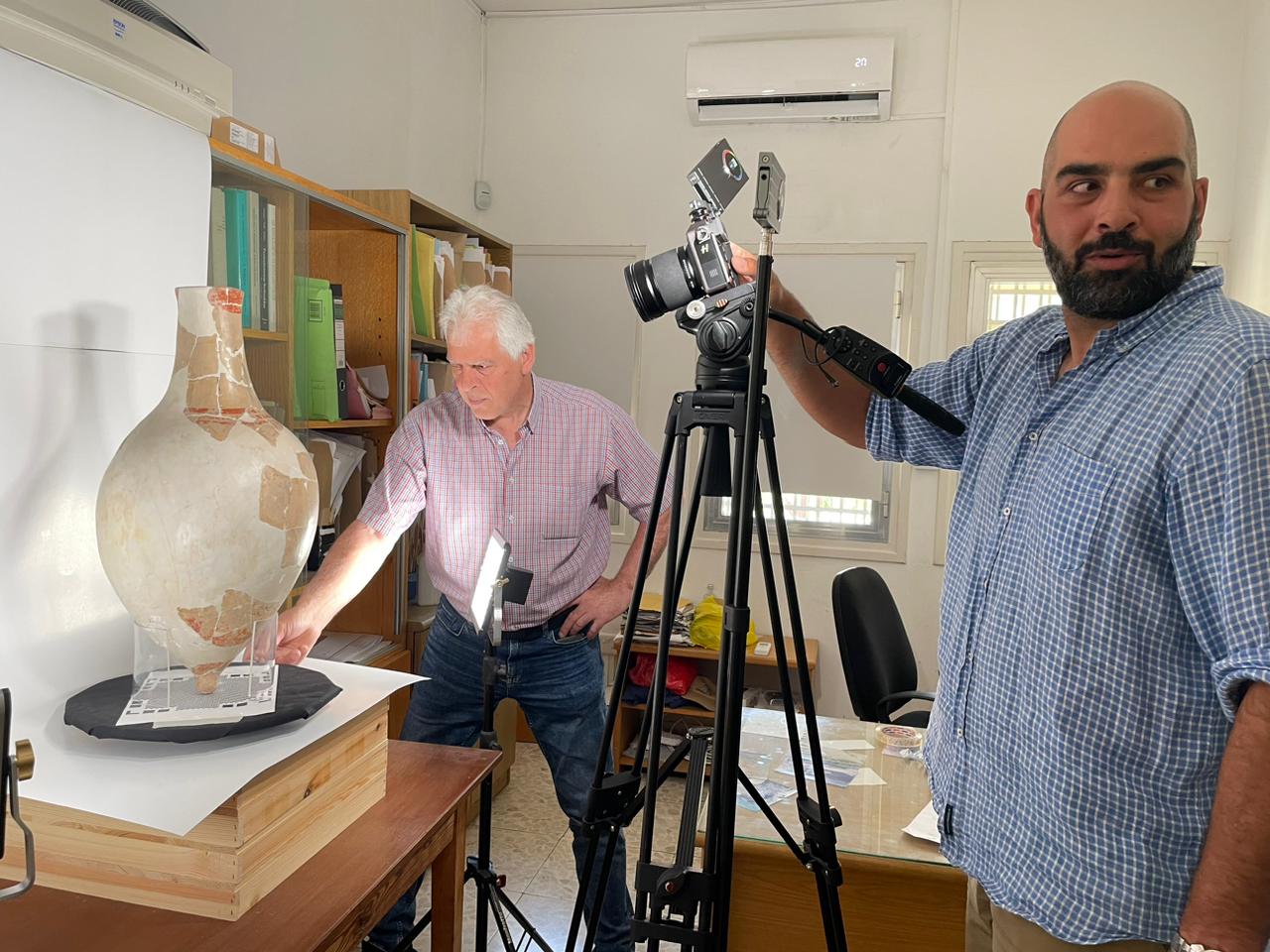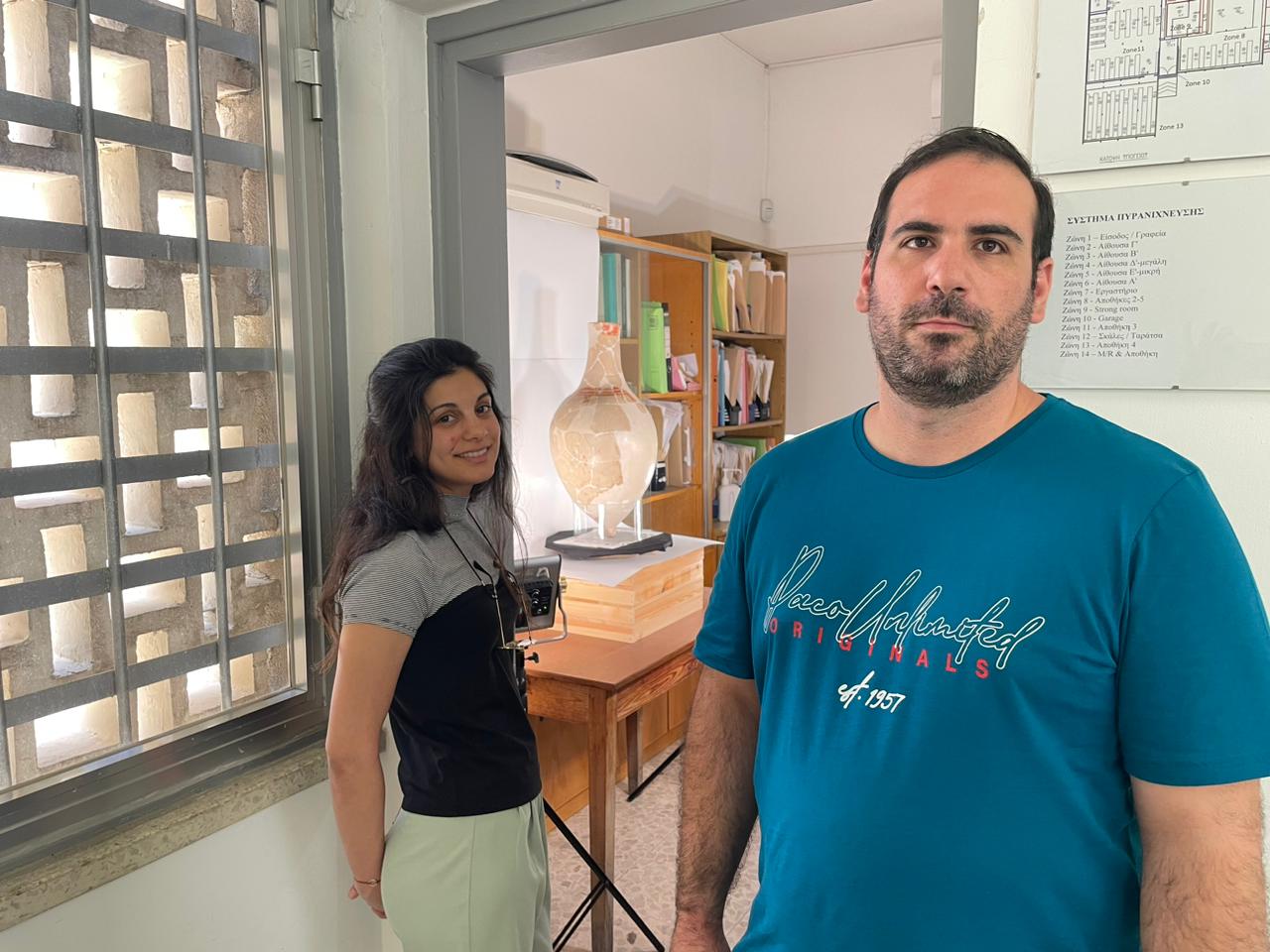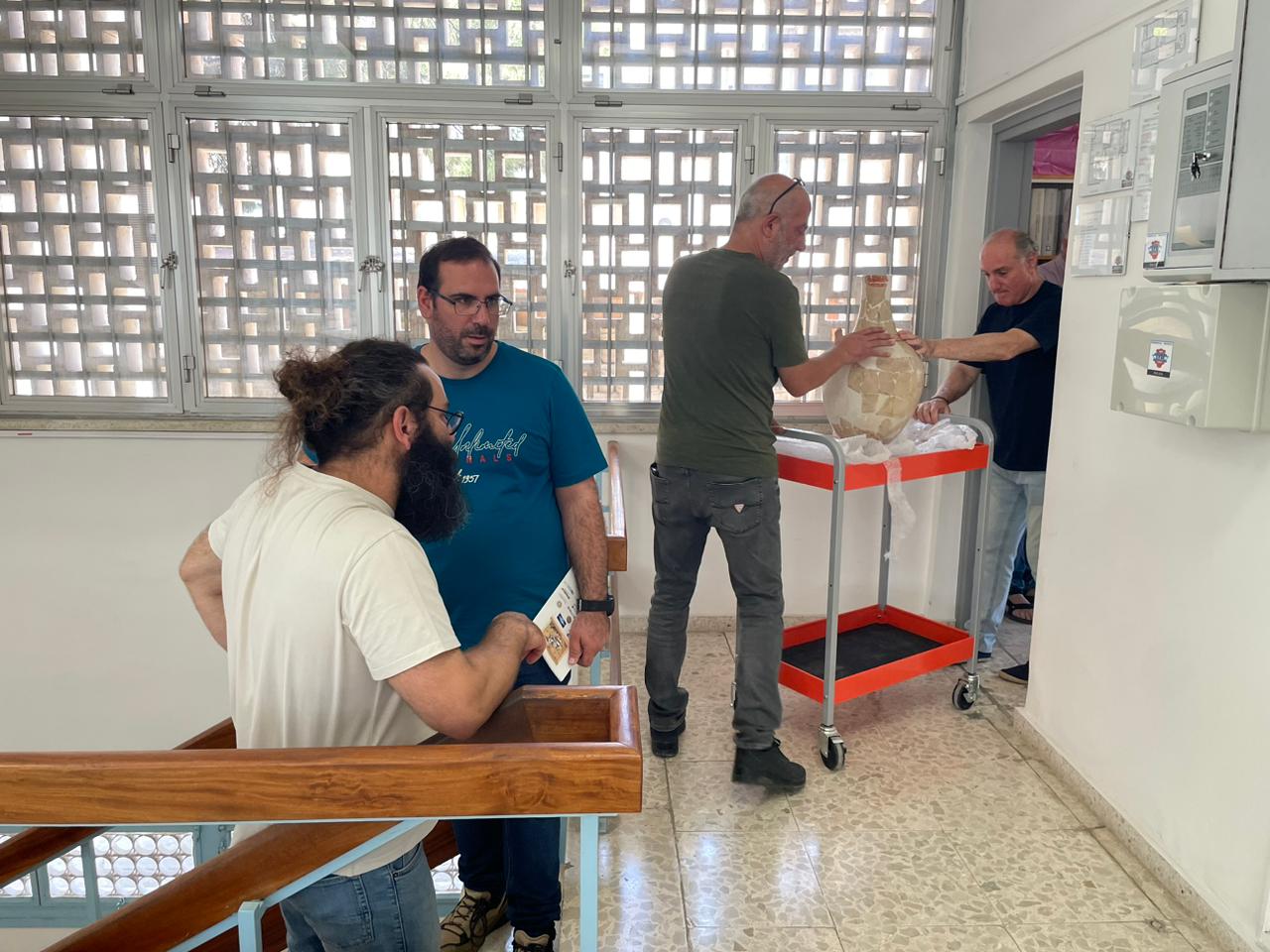1. Introduction
Since antiquity, grapes have been one of the most famous agricultural products and foodstuffs of Cyprus, as well as one of the basic nutritional elements of the Cypriot diet. The vine has been cultivated on the island since ancient times, while it is still widely cultivated on the island more than any kind of fruit. Viticulture constitutes almost one quarter of the agricultural population, while a large proportion of their income derives from the vines. The famous Wine Villages (Krasochoria) of Cyprus – fourteen areas in Limassol, Paphos and Troodos, where inhabitants are exclusively engaged to vine planting and wine-making – constitute the core of vinification of Cyprus since antiquity. However, it is difficult to make any assumptions concerning the time and the circumstances under which the plant was brought to cultivation. It is likely that its cultivation is closely related to the knowledge of turning the fruit of the vine into wine.
Wine is not only related to the nutrition or the economy of the island. Given that some of the equipment, recipes, techniques, and processes used to make wine (such as the traditional Commandaria) and zivania (another traditional grape-related beverage), as well as deserts, such as palouzes and soutzoukos, have been handed down for thousands of years, it is clear that wine constitutes a very important part of the cultural heritage – both tangible and intangible – of Cyprus, totally connected with the traditions, the art and the religion of the island.
This case study will focus specifically on highlighting Cyprus’ long history of wine and zivania making by digitizing two items of antiquity related to the storage of wine (a Chalcolithic wine jar) and the production of zivania (the zivania alembic). The aim is to holistically document these artefacts in order to contribute towards enriching the islands digitally recorded tangible and intangible heritage regarding the making of wine and other grape-related products.
The famous Cypriot Wine
The Cypriot wine became famous since antiquity while poets and historians, such as Homer, Stasinus, Pliny, Strabo, and others, sang the praises for its high quality and its sweet flavour. As early as 1100 B.C. the epic poet Homer refers to the Cypriot wine, while the great poet Hesiod in his book Works and Days, written around 800 B.C., describes its production in detail. Pliny highlights the importance of wine in antiquity in a simple statement (xiv. 150): “There are two liquids most pleasant to human bodies, wine inside and (olive) oil outside”. Furthermore, Strabo in his Geographica (around 23 AD) mentions that (xiv. 6.5): “In fertility Cyprus is not inferior to any one of the islands, for it produces both good wine and good oil”. Winemaking though, was known in Cyprus long before Strabo wrote, as evident by the archaeological record, while Cypriot wine would be known for centuries by the name of “Nama”. Nevertheless, after Richard the Lionheart sold Cyprus to the Order of the Knights Templar and then to the Frank, Guy de Lusignan, the founder of the dynasty that ruled the island for
three centuries (1192-1489), the Cypriot wine was renamed to Commandaria. During the Lusignans’nrule, catholic crusaders were settled and established themselves on the island in order to build up a feudal kingdom. Among these were the Knights of the Order of Saint John of Jerusalem. During their government (in order for them to have better control of the island) Cyprus was divided into districts called commanderies. The largest territory was that of Limassol, with Colossi Castle being tis centre of administration. Therefore, the name Commandaria was given to the wine because vineyards of excellent quality used to produce this wine were cultivated around the area of Colossi named “La Grande Commanderie”.
After the 12th century, the Cypriot wine became famous in almost all European countries.
A famous poem by Henri de Andeli The Battle of the Wines says that during a wine contest the King of France, Phillip Augustus, asked his messengers to bring him the best wines from all around the world. Commandaria won the first prize and the King called the wine of Cyprus “the Apostle of wines”. Moreover, Ludolf Von Suchen, a historian who visited Cyprus in 1336-1344 writes that Commandaria was the Crusader’s main source of wealth because of the extensive wine trade of that period.
As evident in the text of Estienne de Lusignan, who visited Cyprus in 1850, The Description of the Island of Cyprus, the Cypriot wine is produced almost in the same way as it was produced during that time and even earlier, while he notes that the Cypriot wine is the best of the world.
As Commandaria is not only one of the oldest traditional wines of the world, but it is also produced only in the previously mentioned Wine villages in Cyprus, it was attributed with a Protected Designation of Origin within the European Union, USA and Canada, securing the uniqueness and authenticity of the Cypriot wine
The cases under study
The earliest archaeologically documented evidence for the vine dates back to the middle of the 5th millennium BC, but most probably without any economic significance of the plant in the early prehistory of Cyprus.
Chemical analyses of the botanical remains found at the bottoms of a number of egg-shaped jars (with long narrow necks, pointed nipple bases and no handles) found during Porphyrios Dikaios’ excavation at the archaeological site of Erimi-Bamboula, in 1932-1935, indicate that wine was produced on the island, at least, as early as the Chalcolithic period (3900-2500 BC). More specifically, out of an assemblage of eighteen jars, twelve bottoms contained large traces of tartaric acid (a naturally occurring acid found in several fruits, especially grapes), while the remaining six contained only some traces of the acid. Hence, the research concluded that the Chalcolithic jars were indeed used to intentionally process wine and, furthermore, that the jars with their specific form can be considered the predecessors of amphora-type wine storage vessels in Cyprus.
One of the artefacts under study in this project will be a preserved jar of the assemblage found at Erimi-Bamboula during Dikaios’ excavation.
Another traditional Cypriot grape-related alcoholic beverage is Zivania. This traditional beverage has been produced for centuries in Cyprus as a by-product of wine production, while it is still produced today, using essentially the same methods and recipes as those passed down from many years ago by tradition. Zivania has always been playing an important role in the everyday life of Cypriots and it is currently the most widely consumed spirit on the island. Both archaeological evidence and written sources, including the reports of foreign pilgrims and other visitors to Cyprus, are the main sources of information for the traditional production of zivania. An early alembic apparatus that was used for distilling zivania is the project’s second artefact under study. The apparatus is exhibited at the Cyprus Wine Museum, and it consists of a bronze cauldron, in which the grape pulp was boiled, a heavy semi spherical lid made of metal and fired clay, a long tube passing through a large clay jar, which was filled with cold water, and a vase for collecting the beverage. The study and digitization of the apparatus will help in documenting the traditional process of distilling pomace to obtain zivania.

The digitization and holistic documentation of the two mentioned artefacts will not only elucidate the history of the Cypriot wine, but it will also form a starting point towards creating a fully documented digital historic timeline of the cultivation of grapes and production of grape-related products in Cyprus. In addition, documentation regarding the areas and landmarks important to the wine production will also be included. For example, the area of Colossi and the Castle of Colossi with which Commandaria has strong links, as well as the Erimi village and the archaeological site of Bamboula, where the chalcolithic wine jar under study was found etc. In order to achieve this and to document this tangible and intangible heritage of Cyprus, the team will undertake a thorough investigation to identify which sites, monuments, manuscripts and other artefacts are closely linked to the production, storage, and consumption of grape-related products on the island.
The holistic documentation of the chalcolithic wine jar and the zivania alembic will benefit different types of users, all of which will have different requirements and reasons for accessing the digitized data. The presentation of the digitized artefacts will, therefore, be customized in a way which will allow users to access the necessary knowledge. Examples of stakeholders include users in the education sector for presenting the traditions of Cyprus to schoolchildren, as well as tourists who wish to learn about the history of wine on the island. One possible way to give access to the different users would be to create an interactive desktop and/or a mobile application that allows users to choose the digitized data they are interested in.
6. Research Outputs
Fieldwork Digitisation
Accessibility and Reuse
This case study has been submitted to the local aggregator (APSIDA) and successfully harvested into the Europeana platform under CC BY-NC-SA 4.0 license.
7. Bibliography
- Belgiorno M. R. and Lentini A., 2004. Cyprus in the Prehistory of Wine: Archaeology, Legends and Archaeometry on a symbol of God, Cyprus.
- Dikaios P., 1936. “Excavations at Erimi 1935”, RDAC 1936, Cyprus.
- Egoumenidou E., 1999.
- Egoumenidou, Ε., 2002. “From the grape to the vat: traditional buildings and installations for the production and storage of wine in Cyprus (18th-20th century)”, DURO Estudos y Documentos, Vol. VII (13), pp. 135-142.
- Hadjisavvas, S., Chaniotis, A., 2012. “Wine and Olive Oil in Crete and Cyprus: Socio-Economic Aspects”, Cadogan, G., Iacovou, M., Kopaka, K. and Whitley, J., Parallel Lives: Ancient Island societies in Crete and Cyprus, British Scholl at Athens Studies, pp. 157-173.
- Ioannou-Papayianni, E., Kokkinofta, R. I. and Theocharis, C. R., 2011. “Authenticity of Cypriot sweet wine Commandaria using FT-IR and chemometries”, Journal of Food Science, vol. 76, no. 3, pp. C420-C472.
- Kithreotou, F., 2003. “Οίνος και Εκκλησία”, in Κυθραιώτου, Φ. (ed.), Το βιβλίο του Κυπριακού κρασιού, Λευκωσία, Intercollege, pp.117-121.
- Kokkinofta, R., 2003. Authenticity of the Cypriot traditional spirit Zivania [PhD thesis], University of Cyprus, Nicosia.
- Kokkinofta, R.I., Petrakis, P.V., Mavromoustakos, T., Theocharis, C. R., 2003. “Authenticity of the Traditional Cypriot Spirit ‘Zivania’ on the Basis of Metal Content using a combination of Coupled Plasma Spectroscopy and Statistical Analysis”, Journal of Agricultural and Food Chemistry, vol. 51, pp.6233-6239.
- Kokkinofta, R.I. and Theocharis, C. R., 2005. “Chemometric characterization of the Cypriot Spirit ‘Zivania’”, Journal of Agricultural and Food Chemistry, vol. 53, pp.5067-5073.
- Kouriefs, M., 2014. “ Πορφύριος Δίκαιος – Ο πατέρας της Κυπριακής αρχαιολογίας”, Κυπριακό Οινομουσείο – www.cypruswinemuseum.com.
- Papadopoulos, K. D., 2008. History of Commandaria, Arktinos Ltd, Nicosia.
- Papadopoulos 2020.
- Papadopoulos, K., Tsapatsoulis, N., Lanitis, A., Kounoudes, A., 2020. “The History of Commandaria: Digital Journeys Back to Time”, in the 14th International Conference on Virtual Systems and Multimedia VSMM, October 20th-25th, 2008, Limassol, Cyprus, pp. 1-6.
- Psaras, P., 1993. “’Commandaria’ – The Apostole of Wines”, in Vickers, S. (ed.), Vines and Wines of Cyprus. 4000 years of tradition, Limassol, pp. 91-105.
- Psaras, P., 2003.
- Rizopoulou – Egoumenidou, E., 1989. “Η αμπελοκαλλιέργεια και οι παραδοσιακοί ληνοί της Κύπρου”, Τεχνολογία 3, pp. 20-22.
- Rizopoulou – Egoumenidou, E., 1999. “Vines and wines in the traditional culture of Cyprus”, First Symposium of the International Association of the History and Civilization of Vine and Wine, El Puerto de Santa Maria, pp.1-12.
- Roumbas, N., 1993. “The viticulture of Cyprus”, in Vickers, S. (ed.), Vines and Wines of Cyprus. 4000 years of tradition, Limassol, Cyprus, pp. 47-59.
- Theodosiou et al. 2010.




